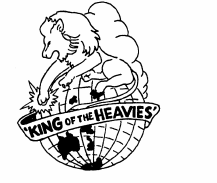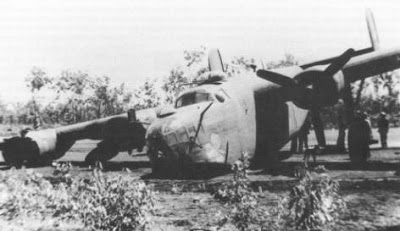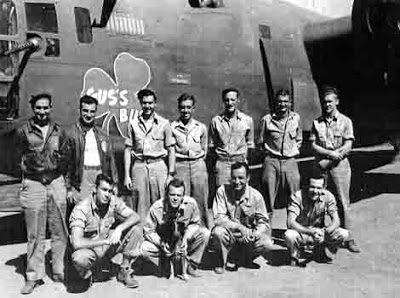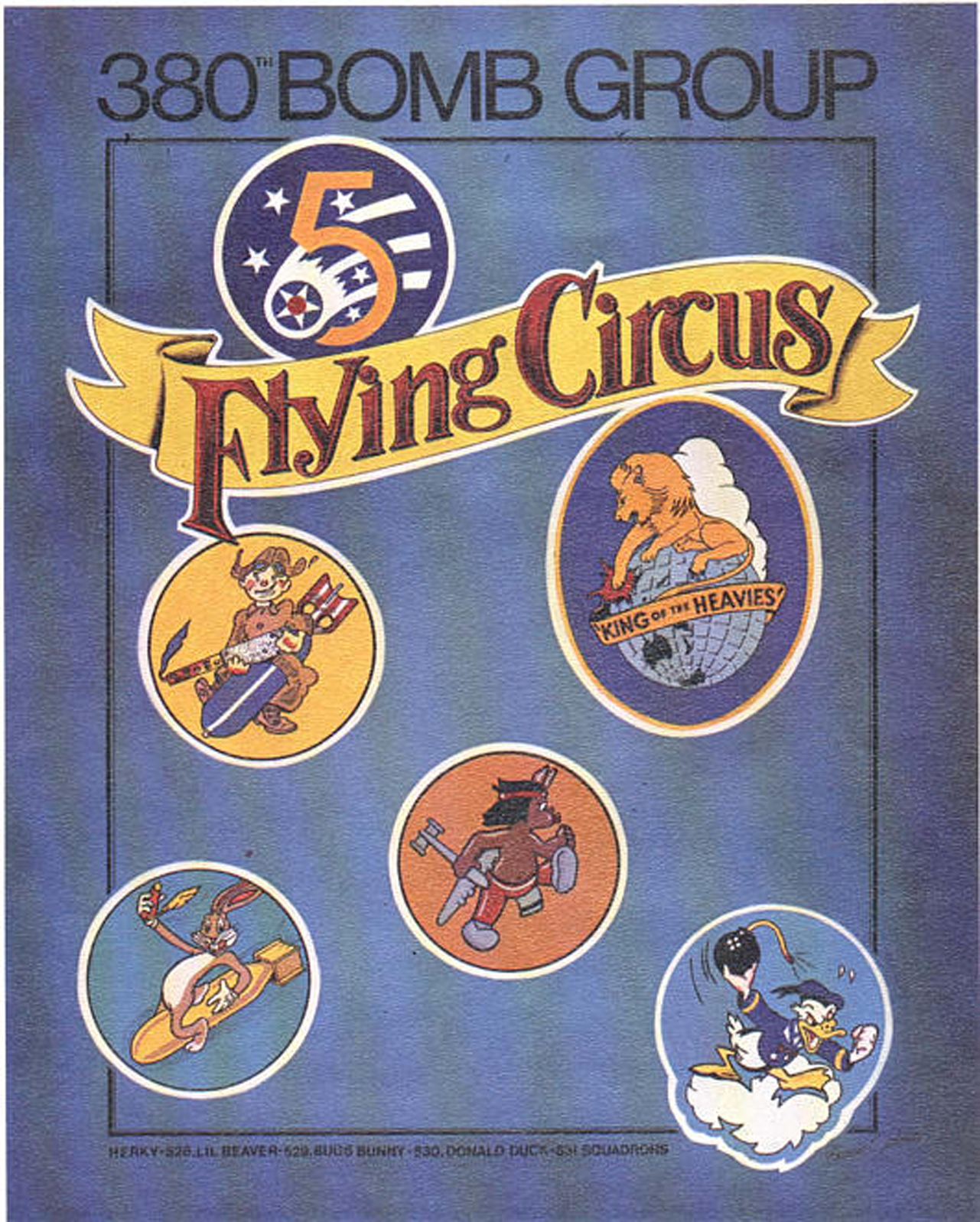|
380th Bomb
Group Association Newsletter #55 - Spring 2014 |

|
Ohio Veteran Survived Fiery B-24 Crash in WWII:
Jerry Wilson (530th)
By Ron Simon T-F staff (Ashland, Ohio), August 16, 2007
Jerry Eugene Wilson, 83, still has a yellowed copy of that telegram his mother received in October 1944. "We regret to inform you that your son, Jerry E. Wilson, was slightly injured in action Oct. 11, 1944, in the Southwest Pacific Area." "It scared the hell out of my mother," Wilson recalled. But if she had seen what was left of Gus' Bus it might have been worse.
Wilson still wonders how he and the other crew members of a B-24 piloted by Major Gus Connery survived after the bomber stalled on takeoff from a field near Darwin, Australia, then crashed and burned. Wilson, a belly gunner and combat photographer, got out on his hands and knees. "Then I was up, and that's when I found out that I should have been a sprinter," he said. "It was every man for himself." One man died. Most crew members were injured. Wilson's ears show damage to this day from the fire that singed them. "The rest of the crew got to go home, but I had to finish my time. I admit the next time I flew, which was out of the Philippines, I was a bit queasy." Especially during takeoff.
Wilson flew 38 missions with the 380th Bomb Group of the 530th Bomber Squadron of the Fifth Air Force in the South Pacific. "I wasn't a member of any one crew or plane, but joined crews where needed," he said. His unit flew out of Australia, New Guinea and the Philippines. Bombing targets included the cities of Hanoi and Saigon in what was then called French Indo-China. Wilson said the targets were enemy shipping, oil refineries, oil fields and mines.
His job was to operate the belly gun, but he was equally proficient with the other gun positions, particularly the waist guns. "My job as a combat photographer was to snap the lens after the bombs dropped to record whatever damage we did," he said.
Working from bomber to bomber, including the doomed Gus' Bus, Wilson had his share of aerial combat. "We fired at a lot of fighter planes. They came at you so fast you barely had time to react," he said. He has no idea if he ever shot an enemy fighter down. "I didn't have time to look."
He thinks his unit's most important raids were against the oil refineries and harbors of Borneo. While many bombs were dropped from great heights, some of these raids were conducted almost at floor level. "We might come in at just 500 feet," he said.
He recalls one bomber that delivered its load at the end of a near vertical dive. Unfortunately, Wilson said, the bomb skipped off the ground and hit that same bomber, killing that plane and its crew.
On a bombing raid to Hong Kong, Wilson said his pilot lost his way and cruised up and down the China coast before finding Hong Kong to drop his bomb load. "We got home flying on fumes," he said.
He recalled that before raids on Formosa, crews were warned that if they had to bail out, the Japanese on the ground were not taking prisoners. "Nobody loved us," he said.
Wilson recalls taking homemade green beer on raids just to get it nice and cold for the men when his plane got back. "It's pretty cold at 16,000 feet," he said.
A native of Bryan, Ohio, Wilson's father was an engineer, specializing in railroad
bridges. So the family moved around a lot. He graduated from LaPorte High School in Indiana in 1941 and
joined the Army Air Force in March 1942 after working a few months in a munitions plant.
During the war, his family lived in Bellville, and that was where he was, on furlough, when the war in the Pacific ended.
After he joined the Army Air Force, Wilson went through a long series of training centers, ending up as a gunner. "I thought I'd be headed for North Africa," he said. Actually, his destination was Oakland, Calif., where he boarded a troop ship headed for Brisbane, Australia. "We hit a typhoon along the way. Everybody was sick. I was the only one that showed up on the chow line," he said. From Brisbane he traveled up the Great Barrier Reef on what he termed "a banana boat" to Port Moresby, New Guinea.
At his first base in New Guinea, he was assigned as a bomb loader. It took a lot of protesting to finally get a crew assignment. "I came to fight, not load bombs," he said.
While he was in the South Pacific, Wilson obtained a saxophone and played in a Glenn Miller-style band between missions. As of 2007 he was still playing the saxophone and enjoys swing and jazz.
Source: http://untoldvalor.blogspot.com/2007/08/b-24-veteran-of-fifth-air-force.html

Jerry Wilson

Gus's Bus.

Connery Crew
Return to Newsletter #55 Topics page
Last updated:
11 June 2014

